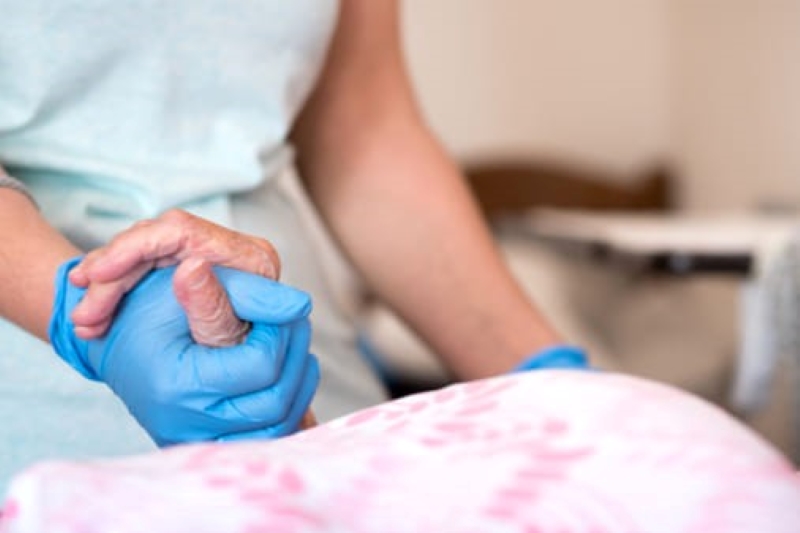
Bloodborne Tips To Prevent Bloodborne Pathogen Exposure Risk
Bloodborne pathogens are amongst one of the hardest to control from spreading, even in healthcare facilities. It is estimated that 20 million people globally acquire HBV infections from medical injections deemed unsafe
Large outbreaks can result in thousands of people requiring testing for hepatitis.
The greatest risk lies with health care professionals and related occupations (first responders, nurses, etc).
There is always remains risk to employees in all industries, particularly if they are exposed to another colleague’s blood.
A single paper cut can pose such a risk.
There are a number of steps you can take to remain safe if such a situation presents itself in the workplace.
About Bloodborne Pathogen: How to Prevent Infection?
- Use CPR and rescue breathing equipment including resuscitation masks when giving ventilation (rescue breaths).
- Avoid contact with bodily fluids and blood.
- Cover up sores, cuts and scrapes, removing rings and other jewelry before donning protective gloves. Other protective coverings are also recommended as blood or body fluid can splash easily- this includes eye wear, gowns and masks.
- Change out protective gear before attending to a separate victim.
- Remove protective gear without contacting soiled areas, dispose carefully in proper containers.
- You can never wash your hands too much, particularly after providing care to a victim. Use hot water, soap, hand sanitizer where hand-washing facilities are not available particularly if you’ve come in contact with bodily fluids.
How to Reduce the Risk of Bloodborne Pathogen Exposure at Workplace?
- Use Sharps disposal containers for needles, (particularly applicable to health professionals).
- Dispose of soiled clothing in marked plastic sealed bags for cleaning or disposal where necessary.
- Bio-hazard bags should be utilized for disposal of contaminated gloves, bandages, dressings, etc. Bio-hazard warning labels are mandatory on any container holding such contaminated material.
- Disinfect and clean thoroughly all equipment and surfaces in the workplace contaminated by blood or bodily fluids of any kind. Use an approved and professional disinfectant where possible, or mix chlorine bleach with water (1 part bleach to 9 parts water) and allow it to stand for about ten minutes. Scrub all leather and absorbent materials with a brush and hot water where possible.
When Contamination has occurred
- If contamination has occurred first assess the situation and remain calm- letting a cool head prevail will help alleviate the possibility of others in the area panicking or reacting adversely.
- Irrigate contaminated eyes with saline, clean water or sterile irrigants (eye wash station) for 20 minutes.
- Flush any area contaminated with blood or other infectious material with plenty of water, particularly around the nose and mouth.
- Clean any cuts, needle stick injuries or exposed skin with soap and water
- Prepare a post-incident report for your employer immediately following the incident, to assist with their control plan. In addition, report to EMS or other emergency personnel who can assume care. Include time, place, date, and other extenuating circumstance leading up to the incident. Your employer may have other requirements to note based on any Bloodborne pathogen training they may have offered.
Read Also
Emergency Live Even More…Live: Download The New Free App Of Your Newspaper For IOS And Android
Neonatal Hepatitis: Symptoms, Diagnosis And Treatment
Paediatric Hepatitis B: Maternal-Fetal Transmission
Hepatitis D: Definition, Symptoms, Diagnosis And Treatment
Hepatitis A: What It Is And How It Is Transmitted
Hepatitis B: Symptoms, Causes And Treatment Of HBV
Hepatitis B: Symptoms And Treatment
Hepatitis C: Causes, Symptoms And Treatment
Hepatitis D (Delta): Symptoms, Diagnosis, Treatment
Hepatitis E: What It Is And How Infection Occurs
Hepatic Steatosis In Paediatric Age: What It Is, Causes, Diagnosis And Treatment
Hepatitis In Children, Here Is What The Italian National Institute Of Health Says
Acute Hepatitis In Children, Maggiore (Bambino Gesù): ‘Jaundice A Wake-Up Call’
Nobel Prize For Medicine To Scientists Who Discovered Hepatitis C Virus
Hepatic Steatosis: What It Is And How To Prevent It
Acute Hepatitis And Kidney Injury Due To Energy Drink Consuption: Case Report
The Different Types Of Hepatitis: Prevention And Treatment
Acute Hepatitis And Kidney Injury Due To Energy Drink Consuption: Case Report
New York, Mount Sinai Researchers Publish Study On Liver Disease In World Trade Center Rescuers
Acute Hepatitis Cases In Children: Learning About Viral Hepatitis
Hepatic Steatosis: Causes And Treatment Of Fatty Liver
Hepatopathy: Non-Invasive Tests To Assess Liver Disease
Liver: What Is Non-Alcoholic Steatohepatitis



